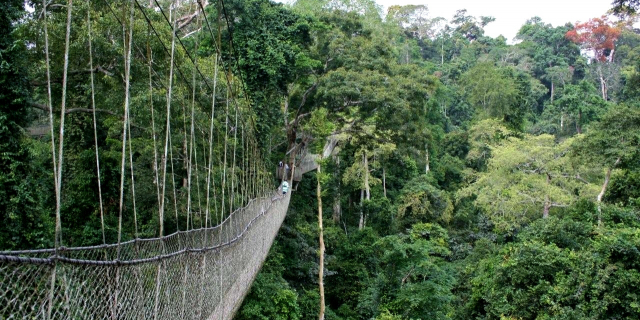Koutammakou, the Land of the Batammariba (French: Koutammakou, le pays des Batammariba) is a cultural landscape designated in 2004 as a UNESCO World Heritage Site at the border between northern Togo and Benin. The area features traditional mud tower-houses which remain the preferred style of living. The traditional mud houses are known as a national symbol of Togo. Many of the mud houses have two floors and some of them have a flat roof.
In 2008, to complete the inscription of the site to World Heritage, the Department of Intangible Cultural Heritage (ICH) of UNESCO, headed by Rieks Smeets, set up the «Safeguarding of the Cultural Intangible Heritage of Batammariba», from the 2003 Convention. The goal was to promote sustainability in Intergenerational transmission and preservation of skills and knowledge in all the essential areas of their culture, such as : manufacture of everyday and ceremonial objects, traditional healing and useful plants, takyent...Read more
Koutammakou, the Land of the Batammariba (French: Koutammakou, le pays des Batammariba) is a cultural landscape designated in 2004 as a UNESCO World Heritage Site at the border between northern Togo and Benin. The area features traditional mud tower-houses which remain the preferred style of living. The traditional mud houses are known as a national symbol of Togo. Many of the mud houses have two floors and some of them have a flat roof.
In 2008, to complete the inscription of the site to World Heritage, the Department of Intangible Cultural Heritage (ICH) of UNESCO, headed by Rieks Smeets, set up the «Safeguarding of the Cultural Intangible Heritage of Batammariba», from the 2003 Convention. The goal was to promote sustainability in Intergenerational transmission and preservation of skills and knowledge in all the essential areas of their culture, such as : manufacture of everyday and ceremonial objects, traditional healing and useful plants, takyentas construction, dance, music, archery, oral traditions, promotion of tourism respecting local traditions, mapping sacred areas, accumulation of data on the intangible cultural heritage and creation of access to it, recordings, films and photos…. Overall, teaching the ditammari, language of Batammariba in primary schools and education of youth in the intangible cultural heritage (distribution of textbooks).
This program was coordinated by the Ministry of Culture and the Ministry of Primary Education of Togo, led by minister Angèle Dola Akofa Aguigah. Dominique Sewane, whose groundwork and her research and publications on the Batammaribas’ ceremonial life, had an important role in the designation.
From 19 to 24 October October 2018, UNESCO organized an emergency mission to assess the damage allegedly caused by the August 2018 rains in Koutammakou on habitat and on the intangible heritage. The report was prepared by three international experts: Ishanlosen Odiaua, Dominique Sewane and Franck Ogou.
The Tammari peoples, for which Koutammakou is inhabited, have lived in this site for hundreds of years. They migrated to the area sometime during the 17th or 18th century.
Koutammakou was designated as a UNESCO World Heritage Site in 2004, inscribing it as the Land of the Batammariba. Extensions of the site increased in 2023.
The traditional houses of Koutammakou are known as Siken and are the official national symbol of Togo. They reflect the unique animistic beliefs and traditions of the community.


































Add new comment